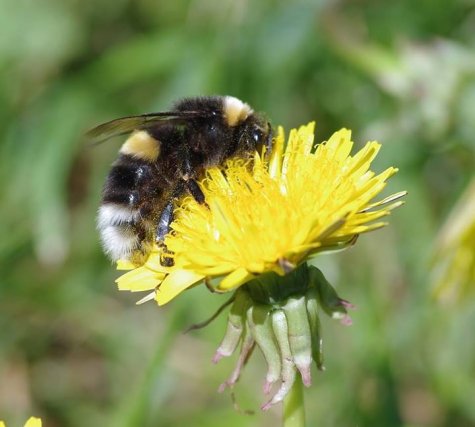What makes a bumblebee a good pollinator?
Text Reet Karise and Marika Mänd
Photo Inga Ilves
Translation: Liis
WHite-tailed bumblebee Maakimalane Bombus lucorum
A pollinator becomes a good pollinator due to its ability to carry pollen from one plant to another. For this bumblebees and other bee-like insects have developed a number of adaptions.
Their body is covered by forked hairs – this helps to keep the pollen on the body of the insect. On females of honey bees and bumblebees a special spot on the hind legs has evolved where pollen is placed for transport – the pollen baskets. The tibias part of their rear legs is widened and surrounded by long strong hairs that help to keep the pollen balls neatly in place. Solitary bees however press the pollen as a uniform layer on to the underside of the body.
Bumblebees have large eyes and a well developed visual centre in the brain – it supports the ability to recognize worthwhile flowers already from afar. All bee-like insects distinguish colours well. They distinguish best between yellow and blue shades but they cannot see red. Because of this there are no flowers with pure red colour in our nature where bees and bumblebees are the main pollinators.
Bumblebees have a good sense of smell – helped by this they easily locate flowers outside their range of vision and can establish whether the selected flower still contains the expected reward or if someone else has recently visited this flower and removed the food supply. For collecting nectar bee-like insects have a honey stomach into which the nectar from the flowers is sucked and that on reaching the nest is emptied into the honey cells.
Join the „Meie kimalased – Our bumblebees” group on facebook: LINK
and share your pictures of the bumblebees in your garden with other enthusiasts!









